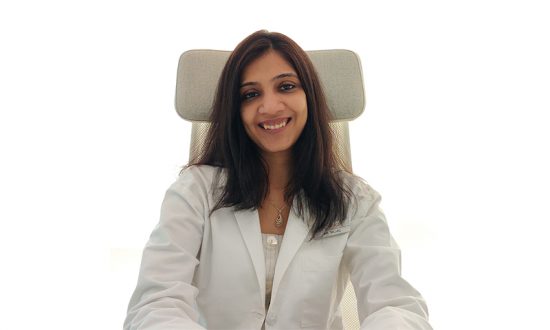Dr. Sejal holds over a decade of experience and dual degrees of MD and DNB in Dermatology and Venereology. She is an expert in domains of skin, hair and nail care. Over these years, Dr. Sejal has worked alongside Mumbai’s senior-most doctors at the biggest hospitals and private skin clinics. At InUrSkn, she has established simple goals to provide affordable yet high quality skin & hair care services. Dr. Sejal has benefited patients with varying needs, be it serious diseases or advanced cosmetic procedures.
The first medical devices and tools can be traced back to the neolithic period around 700 BC. Since then, the need of human beings to improve the quality and span of our lives has ensured early adoption of technology to this field. It is now at such a state that every facet of a visit to a doctor’s clinic is flush with technology. I have been a practicing dermatologist for more than a decade and find that I need to keep up with the changes in medical technology on almost a constant basis.
Technology in medical interactions
My day starts with an app that tells me exactly how many appointments are scheduled today and which is generally followed by messages on a messaging platform from the clinic about patients who may need attention between last night and this early morning. In addition to this, even while I was sleeping patients took appointments for the following days in the middle of the night, thanks to an automated appointment booking system.
This is often followed by a few online appointments, where patients are able to connect with me over the internet for a detailed conversation aided by video and images thanks to the proliferation of mobile technology.
So far so good.
But then, through my consultations (whether online or offline) I do meet half doctors on a fairly regular basis. There is a lot of information available online which my patients often mistake for knowledge. While often frustrating for doctors, information availability is one of the most important aspects of progress in medical sciences, where patients and doctors alike are a lot more informed and aware.
Heading to the clinic I find patients checking their information in a medical record system that digitizes their basic information and all my observations about their medical history and the line of treatment.
The hospital of tomorrow is here
The spread of technology into surgery and therapy has been very rapid in the last decade. You can imagine absolutely any single technology and you will practically find it in a hospital somewhere. To give you an idea, here are some thoughts for you:
Computer aided modelling and 3d printing finds its way into modelling and build-up of custom made teeth, custom made body joints and so on.
Optical Enhancements and Medical Imaging: No modern surgery is now possible without a serious optical enhancement or imaging of some nature. These could be endoscopes that help doctors see deeper into your body or imaging systems that take scans of your body which your age old x-ray would never ever be able to.
Robotics: Robot aided surgery is now becoming a fairly routine thing. Everything from a simple hair transplant to a neuro surgery can be done with the help of robots.
The engineered molecules you call medicines
When we think of technology we often forget that the most amount of technology in medical science nowadays lies in the medicines, therapeutics and vaccines that are administered in billions of doses every day. Some of these medicines are now so amazingly advanced that they can target only a specific type of cell in your body or cause an extremely specific response in your body. All of this has been possible thanks to technologies like genetic sequencing, Artificial intelligence and machine learning.
Back at the clinic
Amongst the patients scheduled in a day, there are some patients who will need to be treated with therapeutic machines using a variety of technology
Lasers: Your dermatologist’s office now probably has more lasers than people. There are a variety of lasers and other light stimulation devices that we at our clinic use. These can have technical names like Q -Switched Nd Yag Laser, Pico Second Lasers, Intense pulse lights and so on. These light stimulation devices aid people with a variety of issues ranging from cosmetic needs like skin rejuvenation and hair reduction to more dermatology oriented issues like vitiligo.
Ultrasound Based Devices: Another popular device you may find in your dermatologist’s clinic is some form of ultrasound device that can help with issues like wrinkles, lines, skin laxity etc.
Thermal Energy Devices: These are devices that produce targeted heat under the skin to help with issues like skin rejuvenation etc.
These technologies are in no way a complete list of technologies in play in medical sciences. These are merely examples to help understand that technological evolution is not a choice but just a constant fact of life. And while there may be definite pitfalls along the way, there is no denying that technology holds the key for a far richer human existence.


